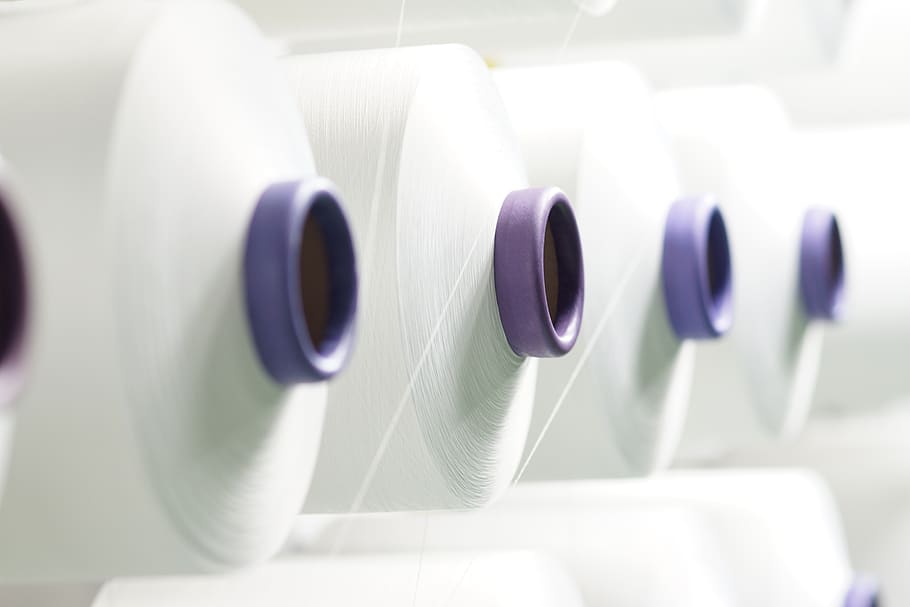Is Polyester Environmentally Friendly?
How does polyester affect the environment?
Despite the popularity and practicality of producing and using polyester, it does produce some negative environmental impacts.
Since polyester is derived from a fraction of petroleum, the core of polyester is carbon, and the source of the material cannot be renewed. Petroleum is required as the feedstock for polyester and also as the source of energy for heat and extrusion.
If millions of crude oil barrels are needed for single-use plastic bottles, then 70 billion barrels are needed to produce polyester alone. This is a huge quantity of crude oil, and the byproducts of refineries and the other processes needed to produce polyester are staggering.
Is Polyester a Fabric or Plastic?
What is the polyester fabric?
Polyester is a kind of polymer that is formed into material used for manufacturing fabrics.
Purely synthetic polyester is more durable than plant-based polyester. Textiles made from this material also have a higher resistance to fire, tearing, shrinking, and wrinkling. The durability of polyester increases when the textile is spun alongside natural fibers such as cotton.
Many clothing manufacturers highly prefer blends of polyester and cotton. Polyester also has some industrial applications, such as sealing parts of jet planes. Resistance to the elements and wear-and-tear make polyester a very versatile industrial material.
What is polyester made of?
There are polyester fabrics made from plants’ cellulose, but the majority of polyester fabrics in the market are made from synthetic materials. Polyester is used mainly for producing textiles for the clothing industries and markets.
Is Polyester a Sustainable Material?
Is polyester sustainable?
Polyester is far from sustainable because of its origins and all the steps needed to produce polyester. It also severely harms the environment and causes pollution at a severe level. Because of the position of crude oil in the production process, polyester production produces many byproducts that poison the land and the ocean.
Additionally, synthetic fabric production is the leading source of microplastic pollution of oceans. Up to 1900 pieces of Microplastics are removed from a single garment when washed for the first time. Now multiply that by the number of garments made from polyester each year, and you will begin to see the problem.
Microplastics don’t disappear when they are sunk into the ocean. Instead, like their bigger counterparts, they stay in the ocean and are often ingested by marine animals of all shapes and sizes. Polyester microplastics cannot be digested. The water does nothing to decompose it, and like other types of microplastic, they will poison marine animals and, eventually, the people who consume these marine animals.
It may come as a surprise to many that microplastic pollution in the ocean doesn’t stop when you cook or process seafood. All that plastic junk in the sea will eventually find its way to your dinner table – that is how severe plastic pollution has become in our oceans.
Going back to the issue of sustainability: polyester can’t be a sustainable synthetic fabric because the source of its materials is non-sustainable. In short, it is manufactured like PET, which is the same material used for manufacturing single-use soda bottles and water bottles. Polyester fabrics are made from the most common and ubiquitous type of plastic found globally. There is nothing posh about it, though brands can make a difference in how polyester is received. Additionally, large clothing manufacturers don’t want to use recycled polyester, either.
Is polyester biodegradable?
Polyester is not biodegradable because it takes several hundred years to decompose completely. So, every bit of polyester produced since the middle portion of the 20th century is still around. The garments may be out of sight, but they have certainly not decomposed yet.
This is the sad story of every product made with petroleum-based distillates. Synthetic materials are so dense and are carbon-based, and therefore, will take centuries to become decomposed enough to become harmless to living beings, especially humans.
The top producers of polyester in the world are Bangladesh, China, and Indonesia. Incidentally, these countries are also the top regions for garment production in the world.
Is Polyester Good for Environment?
Concisely, polyester can never be good for the environment because every step in its manufacture is riddled with toxic chemicals and byproducts that harm nature. The chemicals used for treating polyester are also poisonous and can release toxins into water, air, and land.
There is a reason why rivers closest to textile manufacturing plants often turn strange colors. The rivers can turn red, blue, or even black, depending on the composition of the toxic compounds being thrown out illegally by many factories.
For one, China has many instances of factories turning entire rivers yellow or red because of how much chemical waste the factories are throwing away, as the factories barely invest in the proper safeguards for maintaining inland water bodies. What happens is that the people who depend on the inland water bodies have to contend with the innumerable amount of toxins in the water, including heavy metals like mercury.
Why do manufacturers have to rely on dyes and other products that can severely harm the environment? The answer is in the material. Environmentally friendly dyes or low-impact dyeing compounds are insufficient for coloring garments made from polyester. Therefore, the manufacturers have no choice in terms of making their operations economical and profitable. They use dyes that can readily poison the earth and the water. Again, the risk extends to villages, cities, and towns that are down-wind or downstream from the manufacturing zones.
Of deeper concern here is the fact that the land can easily absorb these harsh poisons. Is the poison filtered out naturally by the soil? Not really. The majority of the toxins continue to spread and eventually reach the aqua tables or natural groundwater reservoirs deep beneath the soil. This is the same aqua tables tapped by rural villages to obtain drinking water.


